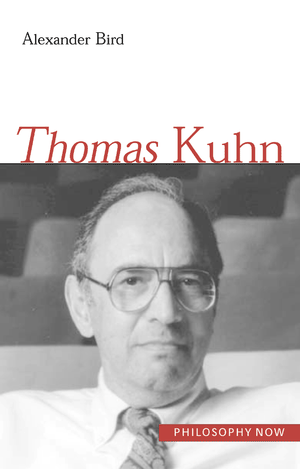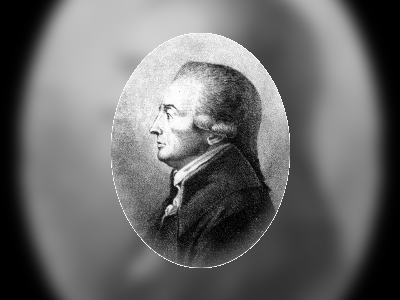מורשת גדולי האומה
בזכותם קיים
beta
Thomas Samuel Kuhn
Was a Jewish-American historian and philosopher of science, widely regarded as one of the most influential philosophers of science in the 20th century.
In 1962, he published his controversial book "The Structure of Scientific Revolutions," which had a profound impact both within academic circles and in popular discourse. In this work, he introduced the concept of "paradigm shift."
Kuhn put forth several notable claims regarding the progress of scientific knowledge. He argued that scientific fields undergo "paradigm shifts," which are periodic, non-linear, and discontinuous changes. These shifts open up new approaches to accumulating and understanding knowledge that previous scientists could not achieve on their own.
Furthermore, Kuhn posited that scientific truth cannot be determined solely by objective criteria. Instead, it is also defined by the "consensus" of the scientific community. Competing paradigms are often incomparable or unjudgeable, meaning they offer irreconcilable or unagreed-upon descriptions of reality. Therefore, our understanding of science cannot rely solely on objectivity. Science must also account for subjective perspectives because all objective findings ultimately rely on the subjective assumptions of researchers or their cultural and intellectual contexts.
Anti-revisionism and resistance to his ideas:
Upon the publication of his book, Kuhn's ideas were met with significant criticism in the scientific community. However, within a decade, his ideas gained traction in academic circles, sparking debates and expansions on the topic. Over time, his concepts and especially the term "paradigm" found applications beyond science, notably in areas unrelated to science. Former U.S. President George H.W. Bush even incorporated the notion of a "new paradigm" into economic policy.
Kuhn's ideas also found resonance among researchers who embraced a historical revisionist perspective, a viewpoint often considered extreme. These researchers claim that history is distorted to fit their own agendas.
In a later interview, Kuhn argued that his ideas were misunderstood and that there is indeed important scientific truth that we should seek. He emphasized the crucial role of pursuing this truth for human existence and development. According to him, his intention was to highlight the numerous obstacles and "contaminants" that hinder the discovery of profound scientific truths, contrary to the belief held by many that there is no such truth or no reason to pursue it.
Regarding the term "paradigm," which became widely used following the publication of his book, Kuhn wrote:
Biography:
In 1949, Kuhn earned a Ph.D. in physics from Harvard University, under the guidance of John van Vleck. From 1948 to 1956, he taught the history of science at Harvard. He later taught at the University of California, Berkeley, until 1964, Princeton University until 1979, and MIT until 1991.
Structure of Scientific Revolutions:
Kuhn's seminal work, "The Structure of Scientific Revolutions," focuses on the historical development of science. This book revolutionized the philosophy of science.
"The Structure of Scientific Revolutions" was originally published as an article in the "International Encyclopedia of Unified Science," published by the logical positivists of the Vienna Circle. It presented a comprehensive theory describing the development of scientific knowledge as a sequence of successive revolutions (paradigms) rather than linear accumulation and gradual correction of errors, as was commonly believed until then. According to Kuhn, within this development, the nature of scientific inquiry within a particular field can abruptly change. In general, science can be divided into distinct and separate stages:
1. Pre-science, which lacks a central paradigm, comes first.
2. "Normal science" follows, where scientists attempt to extend the central paradigm by solving puzzles. According to Kuhn, normal science is the most productive stage: "When the paradigm is successful, the profession will have solved problems that its members could scarcely have imagined and would never have undertaken without commitment to that paradigm."
3. Kuhn also introduced the concept of "disciplinary matrix" to refer to scientific knowledge based on an existing paradigm, with attempts to generalize and refine it. He demonstrated how often this conventional science can lead to scientific revolution and the formation of new paradigms.
The profound influence of this book is evident in the changes it brought to the lexicon of the philosophy of science. Kuhn's work popularized the term "paradigm" itself, and it has since been used extensively, extending far beyond its original context. He also coined the term "normal science" to refer to the daily, routine work of scientists operating within a paradigm. This work played a significant role in the spread of the term "scientific revolutions" to various periods and disciplines, contrary to the notion that there was only one scientific revolution during the Renaissance.
Kuhn put forth several notable claims regarding the progress of scientific knowledge. He argued that scientific fields undergo "paradigm shifts," which are periodic, non-linear, and discontinuous changes. These shifts open up new approaches to accumulating and understanding knowledge that previous scientists could not achieve on their own.
Furthermore, Kuhn posited that scientific truth cannot be determined solely by objective criteria. Instead, it is also defined by the "consensus" of the scientific community. Competing paradigms are often incomparable or unjudgeable, meaning they offer irreconcilable or unagreed-upon descriptions of reality. Therefore, our understanding of science cannot rely solely on objectivity. Science must also account for subjective perspectives because all objective findings ultimately rely on the subjective assumptions of researchers or their cultural and intellectual contexts.
Anti-revisionism and resistance to his ideas:
Upon the publication of his book, Kuhn's ideas were met with significant criticism in the scientific community. However, within a decade, his ideas gained traction in academic circles, sparking debates and expansions on the topic. Over time, his concepts and especially the term "paradigm" found applications beyond science, notably in areas unrelated to science. Former U.S. President George H.W. Bush even incorporated the notion of a "new paradigm" into economic policy.
Kuhn's ideas also found resonance among researchers who embraced a historical revisionist perspective, a viewpoint often considered extreme. These researchers claim that history is distorted to fit their own agendas.
In a later interview, Kuhn argued that his ideas were misunderstood and that there is indeed important scientific truth that we should seek. He emphasized the crucial role of pursuing this truth for human existence and development. According to him, his intention was to highlight the numerous obstacles and "contaminants" that hinder the discovery of profound scientific truths, contrary to the belief held by many that there is no such truth or no reason to pursue it.
Regarding the term "paradigm," which became widely used following the publication of his book, Kuhn wrote:
Biography:
In 1949, Kuhn earned a Ph.D. in physics from Harvard University, under the guidance of John van Vleck. From 1948 to 1956, he taught the history of science at Harvard. He later taught at the University of California, Berkeley, until 1964, Princeton University until 1979, and MIT until 1991.
Structure of Scientific Revolutions:
Kuhn's seminal work, "The Structure of Scientific Revolutions," focuses on the historical development of science. This book revolutionized the philosophy of science.
"The Structure of Scientific Revolutions" was originally published as an article in the "International Encyclopedia of Unified Science," published by the logical positivists of the Vienna Circle. It presented a comprehensive theory describing the development of scientific knowledge as a sequence of successive revolutions (paradigms) rather than linear accumulation and gradual correction of errors, as was commonly believed until then. According to Kuhn, within this development, the nature of scientific inquiry within a particular field can abruptly change. In general, science can be divided into distinct and separate stages:
1. Pre-science, which lacks a central paradigm, comes first.
2. "Normal science" follows, where scientists attempt to extend the central paradigm by solving puzzles. According to Kuhn, normal science is the most productive stage: "When the paradigm is successful, the profession will have solved problems that its members could scarcely have imagined and would never have undertaken without commitment to that paradigm."
3. Kuhn also introduced the concept of "disciplinary matrix" to refer to scientific knowledge based on an existing paradigm, with attempts to generalize and refine it. He demonstrated how often this conventional science can lead to scientific revolution and the formation of new paradigms.
The profound influence of this book is evident in the changes it brought to the lexicon of the philosophy of science. Kuhn's work popularized the term "paradigm" itself, and it has since been used extensively, extending far beyond its original context. He also coined the term "normal science" to refer to the daily, routine work of scientists operating within a paradigm. This work played a significant role in the spread of the term "scientific revolutions" to various periods and disciplines, contrary to the notion that there was only one scientific revolution during the Renaissance.
- תומאס קון – ויקיפדיהhe.wikipedia.org






